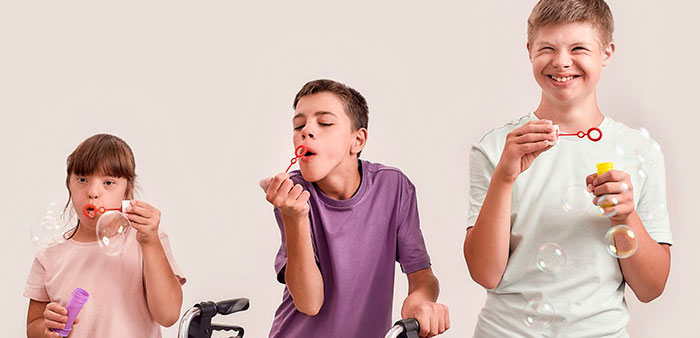
Diplegic cerebral palsy, also known as spastic diplegia, is one of three different types of spastic cerebral palsy. The most common problem with the disorder is muscle stiffness. It manifests during infancy and early childhood, with the average age of diagnosis being three years old.
What Are the Symptoms of Spastic Diplegia?
Spastic diplegia affects mainly the legs and sometimes the arms, making them stiff and contracted. This makes crawling and walking difficult, and most often, children will walk on their toes or with a wide “scissor-like gait.”
Legs can also turn inwards and cross at the knees due to excessive muscle contractions. Other children may not be able to walk at all. The upper extremities of the body may not be affected at all and may function normally.
Some children with spastic diplegia also have associated symptoms, such as problems with coordination and balance, seizures, joint contractures, or cognitive impairment, which can range in severity.
Other symptoms of diplegic cerebral palsy include:
- Toe walking
- Flexed knees
- Late motor milestones, including walking delayed until age two to four
What Causes Spastic Diplegia?
As with other types of cerebral palsy, spastic diplegia is caused by brain damage, which generally happens before, during, or shortly after birth.
According to the National Institute of Neurological Disorders and Stroke (NINDS), babies born prematurely and with low birth weight are at a heightened risk of developing cerebral palsy.
Medical mistakes by healthcare providers account for around 10% of cerebral palsy cases and can happen due to:
- Improper use of forceps and other birth-assisting tools
- Failure to properly monitor fetal heartbeat and stress
- Failure to carry out an emergency C-section when indicated
- Failure to detect, diagnose and treat maternal infections or medical conditions
Other reasons infants may develop spastic diplegia include:
- Rh incompatibility
- Maternal seizures
- Maternal exposure to toxic substances
- Intrauterine stroke
- Severe or untreated jaundice
- Neonatal infection, such as meningitis
Spastic Diplegia Treatment
Most children with cerebral palsy benefit from physical therapy, which is especially true for children with spastic diplegia. Physical therapy can help loosen stiff muscles, promote physical healing and wellness, help with balance and posture issues, build stamina and strength, and much more.
Healthcare providers may prescribe medications that aim to decrease spasticity. These include muscle relaxants, anticonvulsants, and other types of drugs that work on the muscles to reduce spasms.
The child may need a walker, braces, and other forms of mobility assistance. In some cases, surgery is indicated when there are increased pain or limb deformities.
Many parents take their children to massage and yoga therapy, which helps relax muscles via deep massage and builds strength. Talk to your child’s doctor if you think massage therapy or yoga might be a good choice for your child.
Sources:
- Cerebral Palsy Guidance
- What is Cerebral Palsy? (2019, September 11). Centers for Disease Control and Prevention.
- Cerebral Palsy
- Spastic Diplegia Cerebral Palsy. (2018, August 7). Genetic and Rare Diseases Information Center (GARD) – an NCATS Program | Providing Information About Rare or Genetic Diseases.
- Spastic Cerebral Palsy. (n.d.). Nemours KidsHealth
- What Causes Spastic Diplegic Cerebral Palsy? (2019, November 9). Latest Medical News, Clinical Trials, Guidelines - Today on Medscape
- O'Neil ME , et al. (n.d.). Physical Therapy Clinical Management Recommendations for Children with Cerebral Palsy - Spastic Diplegia: Achieving Functional Mobility Outcomes. - PubMed - NCBI. National Center for Biotechnology Information.
- A Review of Spasticity Treatments: Pharmacological and Interventional Approaches. (n.d.). PubMed Central (PMC).
NDIS THERAPY FINDER - FREE SERVICE
LET US FIND YOU A SKILLED SUPPORT WORKER

